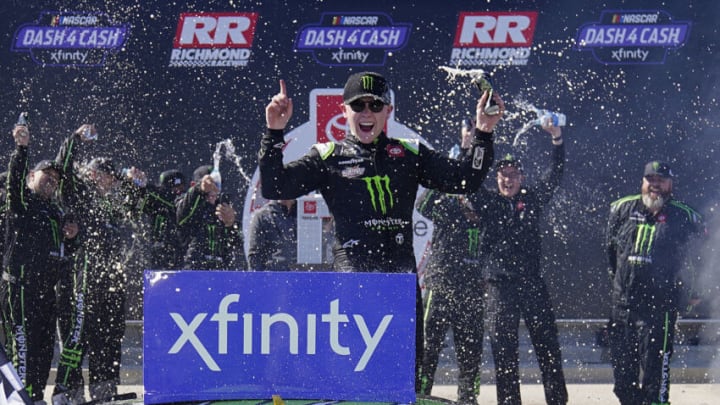The 2022 NASCAR season has seen several finishes involving heavy contact, leading some to question if “driver code” has been abandoned.
NASCAR has shown its rights to the term “contact sport” over the years, whether it be with cars colliding on a superspeedway or with an infamous “bump and run.”
These instances of contact have been more prevalent in recent weeks, most notably in the Cup Series race at Circuit of the Americas and the Xfinity Series race at Richmond Raceway.
Trackhouse Racing Team’s Ross Chastain earned his first Cup Series win after moving Kaulig Racing’s A.J. Allmendinger on the final lap in the penultimate corner of the 20-turn, 3.427-mile (5.515-kilometer) road course in Austin, Texas.
It was a move that resulted in Allmendinger bouncing off of Hendrick Motorsports’ Alex Bowman and subsequently spinning out to finish in 33rd place.
Unhappy with the finish, the Los Gatos, California native stated that, “At the end of the day, we all have to look ourselves in the mirror. If you are okay with it, you’re okay with it.”
Then in the Xfinity Series race at the four-turn, 0.75-mile (1.207-kilometer) oval in Richmond, Virginia, two Joe Gibbs Racing drivers finished in the top two. But only one was happy: winner Ty Gibbs, grandson of team owner and founder Joe Gibbs.
Ty said that teammate John Hunter Nemechek “owes him a bump” after moving him out of the way on the final lap in turns three and four to grab the checkered flag.
But despite fan or driver disapproval, to say that “driver code” has been abandoned is a reach, considering the sport’s history.
NASCAR has seen such moves over the years, including a controversial finish at Martinsville Speedway last year between Bowman and Joe Gibbs Racing’s Denny Hamlin, after which Hamlin referred to Bowman as a “hack”.
Additionally, Daniel Hemric won his first NASCAR race and Xfinity Series championship last year at Phoenix Raceway after making contact with Austin Cindric on the final lap.
Hall of Famer Dale Earnhardt made a living by moving his competitors out of the way, and the “take no prisoners” attitude made the black #3 one of the most iconic car/number combinations in the history of the sport.
Drivers will do anything and everything for a win, whether it’s for their third win of the season like it was for Gibbs, or for the first of their career like it was for Chastain. While payback may be in the future for those two drivers, these instances weren’t examples of an abandonment of “driver code”. They were examples of a determination to win.
